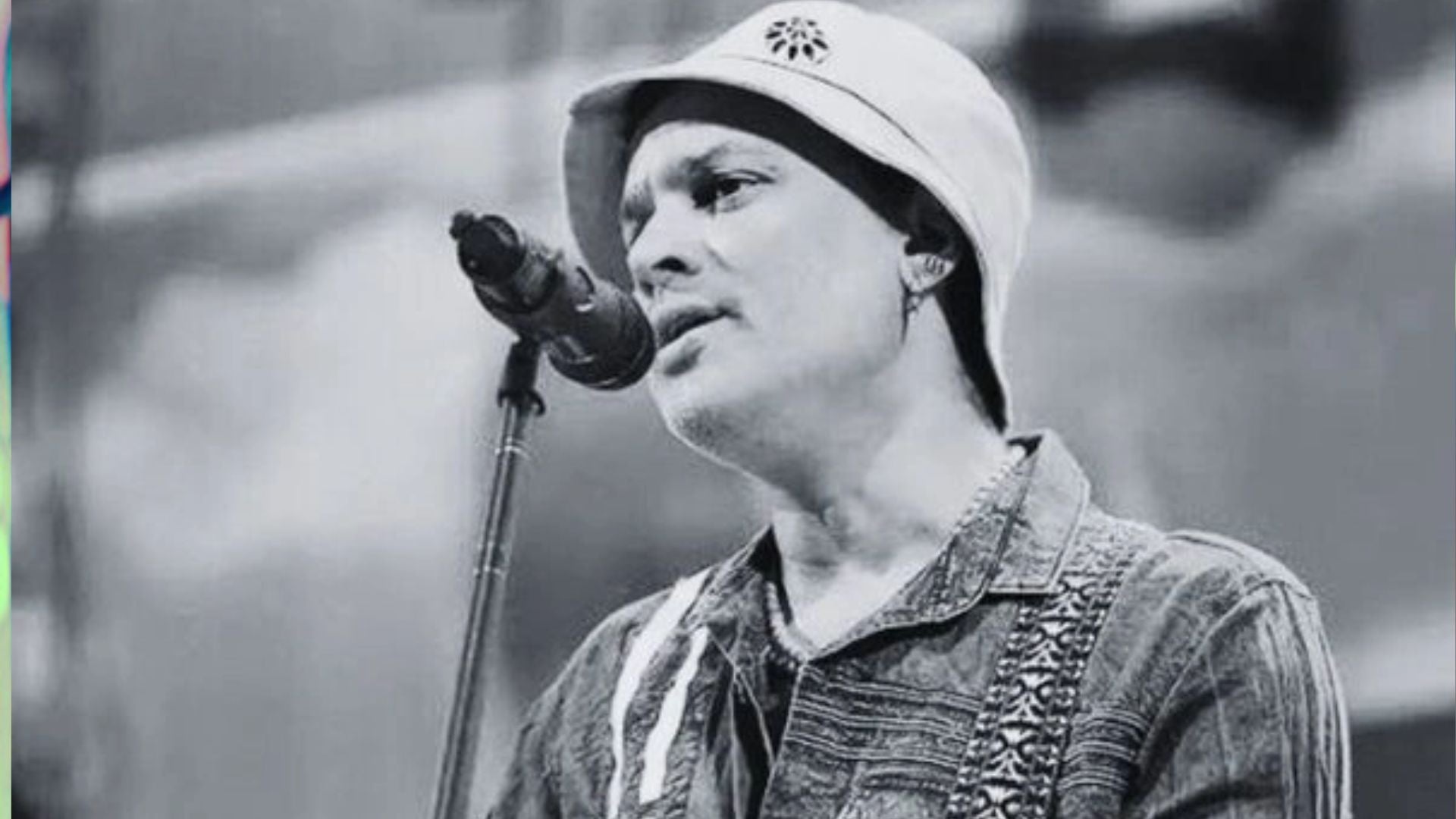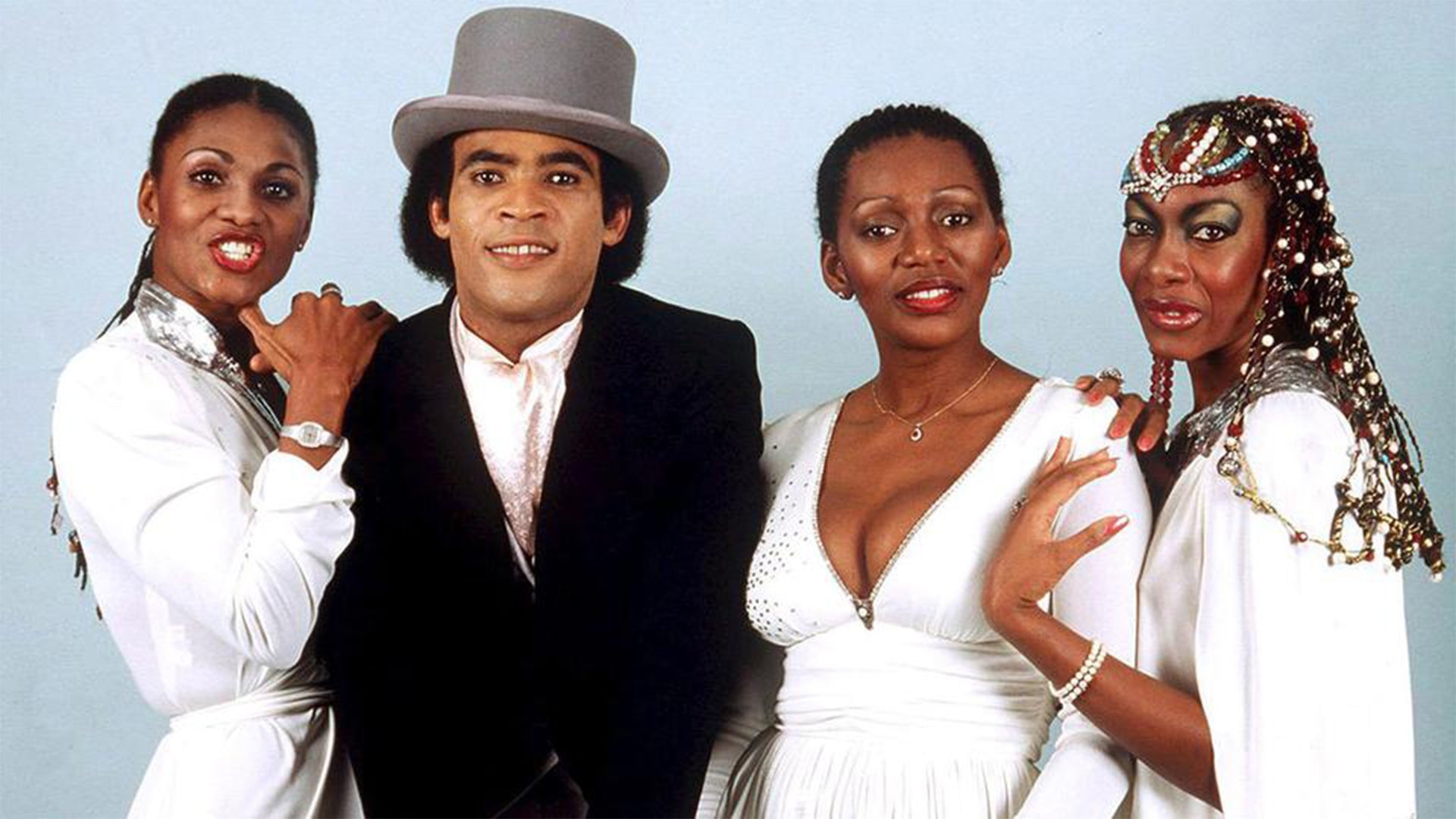Zubeen Garg 18 November 1972 - 19 September 2025

The news of Zubeen Garg’s sudden passing in Singapore on 19 September 2025 has struck a deep chord across Assam, and far beyond it. His exit feels like the dimming of a light that always promised more.
What endures most strongly is the scale of his contribution—the soundscape he built from folk traditions, modern song, and popular cinema, carrying Assamese culture into the national imagination. Born Jibon Borthakur in Tura, Meghalaya, and raised in Assam, his first lessons came from the voices around him: his mother’s singing, the cadences of Bihu, the devotional strains of Borgeet. Out of these influences grew a restless artist who refused to be confined by one form or language.
By the early 1990s, he was already a fixture in Assam’s recording scene, with Anamika (1992) marking the start of a career that stretched over three decades. He gave Assam albums like Xopunor Xur, Junaki Mon, and Maya, alongside Bihu recordings that spoke directly to his people. His national breakthrough came with “Ya Ali” from Gangster (2006), yet even as Bollywood embraced him, he continued to return to Assamese and Bengali songs, refusing to abandon the languages that defined him.
Across more than thirty years, Zubeen sang in nearly 40 languages and dialects, composing, acting, directing, and producing with an energy that seemed inexhaustible. He made Assamese identity legible to the wider world, reshaping folk traditions and threading them into contemporary forms. His voice became shorthand for belonging, for struggle, for joy.
Which is why, in the wake of his death, Assam has responded not only with grief but with collective remembrance. His funeral was marked by full state honours, with tens of thousands lining the streets and chanting his songs. The government has announced memorials in Sonapur and Jorhat, preservation plans for his childhood home, and proposals to rename landmarks in his memory. Youth groups are planning statues and district-wide remembrance events, while Puja committees, musicians, and ordinary citizens have woven tributes into their own rituals of song and gathering.
Anamika
Anamika (1992)
Zubeen’s debut album opener is still a calling card: confessional, homegrown pop that introduced his husky timbre and Assamese lyricism to cassette-era listeners. “Anamika” set the tone for a career balancing intimate songwriting with mass appeal, and it’s a perfect first stop for new listeners discovering his roots.
Hiya Dohe
Anamika (1992)
A tender ballad from the same debut album, “Hiya Dohe” shows how naturally he could phrase Assamese emotion within pop structures. It feels like a living-room recording that somehow fills a field evidence of how his voice alone could make small-scale music feel cinematic.
Dure Dure
Maya (1994)
From his landmark album Maya, “Dure Dure” is classic 90s Assamese pop gentle chord changes, an earworm refrain, and lyrics about distance and longing. It’s the sound of Zubeen building a modern repertoire from regional textures, long before national fame arrived.
Maya Mathu Maya
Maya (1994)
The title track is a fan perennial: lilting, hymn-like phrases over a mellow groove. You hear the songwriter-producer in command of his palette part folk cadence, part soft rock laying down a template he’d revisit for decades.
Jajabor Hoi
1993
“Jajabor” (wanderer) captures his freewheeling persona a restless melody about movement and identity that became lore in Assam. It’s a gateway into his non-film catalogue and the way he made “regional pop” feel universal.
Buku Duru Duru
Joubone Amoni Kore (1998)
Arguably his Assamese playback breakthrough, this heartbeat-soaring number from the film Joubone Amoni Kore put his cinematic voice on the map. The youthful rush in the hook became a generational memory for late-90s Assam.
Tumi Ei Dilahi (Tumiei Dilahi Mithakoi)
Bukur Majot Jole (1999)
A duet with Mahalakshmi Iyer, this song threads city-pop shimmer through riverine Assamese imagery. It’s an early example of Zubeen’s collaborative ease with singers from other industries, expanding the sonic vocabulary of Assamese film music.
Moloyar Dupakhit
Hiya Diya Niya (2000)
From the blockbuster that reenergised Assamese cinema, this romantic track is remembered for its airy tune and unhurried charm. It cemented Zubeen as the voice of youthful love stories on screen at the turn of the millennium.
Lahe Lahe
Nayak (2001)
A soft-breeze ballad that became a campus staple, “Lahe Lahe” later travelled into Bengali as “Shure Shure Gaan Holo,” underscoring his cross-language pull. It’s a masterclass in restraint melody doing the heavy lifting, voice carrying the mood.
Mayabini Ratir Bukut
Daag (2001)
One of his most cherished Assamese songs, “Mayabini” is elegiac, intimate, and instantly singable. After his passing, the track resurfaced statewide as collective remembrance proof that some melodies become rituals of belonging.
At Zubeen Garg’s funeral in Guwahati, his wish was honoured when mourners broke into “Mayabini Ratir Bukut,” the haunting classic from Daag (2001).
The song, long cherished by fans, became the collective anthem of his farewell. Tens of thousands joined in, turning grief into chorus proof of how deeply his music was woven into Assam’s cultural memory.
Ui Guthibo Jaanene
Kanyadaan (2002)
A bright, guitar-led tune that later found a Bengali avatar as “Shure Shure Gaan Holo,” this song maps how Zubeen’s compositions and performances hopped cultures with ease. It’s playful yet polished, and built for endless replays.
O Bondhu Re (Tor Khushi Te)
Premi (2004)
His Bengali catalogue is rich, and this plaintive romantic ballad from Premi shows why. Zubeen’s phrasing softens the edges of grief and hope, making the song feel both filmi and folk-adjacent a tone Bengali audiences embraced.
Piriti Kathaler Antha
Shudhu Tumi (2004)
A jaunty duet that reimagines an Assamese melodic sensibility for Kolkata’s commercial cinema, “Piriti Kathaler Antha” underlines his adaptability. It’s light on its feet, proof that Zubeen could slip into another industry’s idiom without losing himself.
Ya Ali
Gangster (2006)
The nationwide breakout. A Sufi-pop burner delivered with fervor, “Ya Ali” made Zubeen a household name beyond the Northeast. Its devotional intensity and clubby pulse captured mid-2000s Bollywood at full tilt and his voice sits at the heart of it.
Assam accorded Zubeen Garg one of its highest tributes: his cremation was held with full state honours, including a 21-gun salute by Assam Police personnel.
The salute underscored his status as a cultural icon whose music bound communities. Thousands gathered fans, state leaders, artists watching as the honour marked not just an end, but a collective farewell.
Zubeen Garg’s funeral in Guwahati drew a record-breaking crowd, reportedly the world’s fourth-largest, earning a spot in the Limca Book of Records.
Thousands queued through the night for a final glimpse, while lakhs across Assam gathered in farewell. Only three others have seen funerals of comparable scale Michael Jackson, Pope Francis, and Queen Elizabeth II. Garg passed away last week in Singapore.
The Assam government has moved quickly to preserve Zubeen Garg’s legacy. Plans include setting up permanent memorials at Sonapur, where he was cremated, and Jorhat, his hometown.
Officials have also proposed preserving his childhood home as a cultural landmark. Together, these initiatives aim to honour not just the artist, but the collective identity his music gave Assam.




Comments
MRS DEJANA IVICA — 8 days ago
TANGIBLE INFORMATION ABOUT CHRISTMAS LOAN FOR PLANNING…
This is not a normal post that you see every day on the internet where people make false statements and false information about huge financial assistance.. I am aware that many of you have been scammed and that fake agents have taken advantage of those seeking loans. I will not call this a normal statement, I will call this situation where I live a witness to how you can get your loan when you meet the company’s requirements. It really does not matter to have a good credit rating or government approval, all you need is a valid ID card and a valid IBAN number to be able to apply for a loan with an interest rate of 3%. The minimum amount is 1000 euros and the maximum amount that can be borrowed is 100,000,000 euros. I give you a 100% guarantee that you can get your loan through this reliable and honest company, we operate 24 hours online and provide loans to all citizens of Europe and outside Europe. They sent me a document that was checked and tested as valid before I got the loan, so I invite anyone who needs a loan to visit them or contact them via
Email: michaelgardloanoffice@gmail.com
WhatsApp for Europe: +385915608706
WhatsApp for USA: +1 (717) 826-3251
After you contact them, let them know that Ms. Dejana Ivica from Zagreb gave you the information. Seeing is believing and you will thank me later when you get a loan from them. I made a promise that after I get a loan from them, I will post the good news to everyone online. If you have friends or relatives, including colleagues, you can tell them about this offer and that it is happening this CHRISTMAS.
Fat Rosa — 8 days ago
HOW I RECOVERED MY LOST CRYPTO FROM FAKE BROKER ONLINE.
I had lost over $752,000 by someone I met online on a fake investment project. After the loss, I had a long research on how to recover the lost funds. I came across a lot of Testimonies about THE HACKANGEL RECOVERY TEAMS. I contacted them providing the necessary information and it took the experts about 48 hours to locate and help recover my stolen money. If anyone is looking for a Recovery firm to Recover your lost Crypto. You can contact THE HACKANGEL RECOVERY TEAMS . I hope this helps as many out there who are victims and have lost to these fake online investment scammers. You can contact them by using
Email at support@thehackangels.com
Website at www.thehackangels.com
WhatsApp +1(520)200-2320
Usman Bello —
ALPHA KEY BTC RECOVERY: SEEK ADVICE FROM A LICENSED CRYPTO RECOVERY HACKER
Only a small number of skilled hackers has the special hacking knowledge and abilities needed to recover lost Bitcoin. Although there are a lot of recovery websites available, it’s crucial to exercise caution because 99% of them are run by con artists who pose as trustworthy businesses. It is preferable to go for a reliable hacker who can assist you in getting your money back, such as Alpha Key BTC Recovery. I lost $326k in Bitcoin due to mining, but they were able to retrieve it. contact info below
Mail : Alphakey@consultant.com
Website : www.alphakeyrecovery.com
WhatsApp contact :15714122170
Signal contact:15403249396
lucas e,merson —
After over 30 years in the cockpit as a commercial pilot, flying across continents and safely landing thousands of passengers, I was ready for retirement. Like many others, I had put part of my earnings into cryptocurrency—Bitcoin, specifically—as a long-term investment. Over time, that small investment grew substantially, eventually reaching £2,000,000. It wasn’t just a number on a screen; it was my safety net, my future, my reward for decades of hard work and sacrifice. Then, in a single moment, it was all gone. I logged into my crypto wallet one morning and was met with an empty balance—zero. My entire portfolio had vanished. What I later learned was that I had been the victim of a sophisticated form of cyber theft known as cryptojacking. The hackers had exploited vulnerabilities in my system, compromised my private keys, and stealthily transferred every last coin to their own wallets. The feeling? Crippling. I reached out to every avenue I could think of—banks, law enforcement, online crypto forums—but the answer was always the same: “There’s nothing we can do.” I was devastated. It felt like years of planning and saving had been erased overnight. That was until I came across.COINSRECOVERYWORLDWIDE Naturally, I was cautious. The internet is riddled with “recovery experts” who prey on victims twice. But from my first contact with Coinsrecoveryworldwide, the difference was obvious. Their team was transparent, knowledgeable, and deeply empathetic. They didn’t offer empty guarantees—they offered action, and more importantly, they delivered. Here’s what set them apart: Unmatched Technical Expertise Coinsrecoveryworldwide began by conducting an advanced forensic analysis of my case. They traced my stolen Bitcoin through multiple layers of obfuscation—including mixers, tumblers, and shadow wallets commonly used by criminals to launder crypto assets. Their team used blockchain analytics and cyber-intelligence tools to follow the trail where others had hit a dead end. Dark Web Surveillance and Server Penetration They didn’t stop at blockchain tracking. Using legal and ethical cyber-infiltration methods, they breached one of the attacker’s remote servers—uncovering a treasure trove of data: stolen credentials, transaction logs, and access routes. This breakthrough allowed them to identify the specific IPs and even the hardware fingerprints used during the theft. Collaboration with Exchanges and Global Partners Coinsrecoveryworldwide then leveraged their global network and worked directly with several crypto exchanges to flag, freeze, and intercept the stolen assets before they could be laundered or converted. They also collaborated with cybersecurity partners to neutralize parts of the botnet infrastructure the hackers had used. Successful Recovery Within weeks, 95% of my stolen funds—equivalent to £1,900,000—was securely returned to a new, uncompromised wallet. Watching that balance reappear felt like being rescued from a plane crash. I was overwhelmed with relief and gratitude. This experience has taught me that all is not lost after a scam—not when you have the right people in your corner. Coinsrecoveryworldwide didn’t just recover my funds. They restored my sense of justice, safety, and peace. They are not just another tech firm—they are specialists in real-world cybercrime intervention. They combine unmatched technical acumen with genuine care for the people they help. To anyone facing the same nightmare I went through: don’t give up. Coinsrecoveryworldwide is the real deal. If they could recover my £2,000,000 there’s hope for you too. Contact COINSRECOVERYWORLDWIDE Security Company 📧
🌐 Website: [https://coinsrecoveryworldwide.mobirisesite.com/] 📧 Email: Coinsrecoveryworldwide@gmail.com 💬 WhatsApp:+1765-823-6083
Take the step to secure your future—you’re not alone
GH —
USA UK CANADA FULLZ AVAILABLE
FRESH DATABASES & VALID INFO
Guaranteed stuff with replacement offer
SSN DOB DL ADDRESS USA
SIN DOB ADDRESS MMN CA
NIN DOB DL ADDRESS SORT-CODE UK
REAL DL & ID Front Back with Selfie
Children Fullz 2011-2023
Young Age & Old Age Fullz
CC Fullz with CVV & Billing Address
Dumps with Pin Track 101 & 202
Contact for any query & order here:
TG – @ leadsupplier / @ killhacks
What’s App – (+1).. (727). (788). (6129).
TG Channel – t.me/leadsproviderworldwide
VK Messenger ID – @ leadsupplier
E-mail – bigbull0334 at gmail dot com
*(Be aware from scammers using our cloned names on TG)
Providing fresh stuff with 100% guarantee
80% to 90% connectivity ratio
All stuff will be fresh & genuine
USA FULL NAME SSN DOB DL ADDRESS PHONE EMAIL ACCOUNT & ROUTING NUMBER
UK FULL NAME NIN DOB DL ADDRESS PHONE EMAIL SORT CODE & ACCOUNT NUMBER
CANADA FULL NAME SIN DOB ADDRESS PHONE EMAIL MMN
#SSN #SSNDOBDL #SellSSN #CCShop #CCSELLCVV #ShopSSNDOBDLADDRESS #FULLZ #SSNFULLZ
#REALDLSCAN #YoungAgeFullz #Fullzseller #USAFULLZ #FULLZUSA #SellerSSNDOB #ShopSSNDOB
#SIN #SINDOBDL #SellSIN #SINMMNFULLZ #MMNPROSSIN #MMNSIN #CCShop #CCSELLCVV #ShopSINDOBDLADDRESS #FULLZ #SINFULLZ
#REALDLSCAN #YoungAgeFullz #Fullzseller #CANADAFULLZ #FULLZCANADA
#NIN #NINDOBDL #SellNIN #CCShop #CCSELLCVV #ShopNINDOBDLADDRESS #FULLZ #NINFULLZ
#REALDLSCAN #YoungAgeFullz #Fullzseller #UKFULLZ
Other stuff we’re providing as well, listed below:
===========
DL Front back with selfie USA|UK|CA|AUS|GR|FR|RU|CHINA e.t.c
Fullz with MVR & W-2 Form
Business Pros Company fullz with EIN
High credit scores pros (700+ score)
Dead fullz bulk quantity
Tax return filling fullz (FASFA|UBER|DOORDASH|SBA|PUA|UI|BENEFITS)
USA Fullz with DL Front Back with SSN & Selfie
Email Leads available in different categories:
===========
Crypto Leads
Fresh Sweep Stakes
Business P2P leads
Medical Leads
Education Leads
Country wise Leads
Bank Details Leads with phone numbers
Specific States & Cities Leads USA UK CAN
Car Database leads with registration No.
Doctor’s Leads
Health Leads
Facebook|Amazon|LinkedIn|Ebay Leads
Payday Leads
Mortgage Leads
All type of Sp’a’mming Tools & Tutorials are available for learning purpose.
>SMTP
>RDP
>BRUTES
>SHELLS
>C-panels
>Web-Mailers
>Bulk SMS & E-Mail Senders
>Sc@mpages & Scripting
>Cash out & Carding Tutorials
>H@cking Tools & Tutorials
Many other Stuff we can provide on demand as well
Feel free to contact with us, we’ll assist you 24/7
We’re providing stuff for learning to make money as well
Proper guidance & assistance will be provided
Waiting for you guy’s
Here we are for you:
-TG – @ leadsupplier / @ killhacks
-What’s App – (+1).. (727). (788). (6129).
-TG Channel – t.me/leadsproviderworldwide
-VK Messenger ID – @ leadsupplier
Harris Thomas —
“In the crypto world, this is great news I want to share. Last year, I fell victim to a scam disguised as a safe investment option. I have invested in crypto trading platforms for about 10yrs thinking I was ensuring myself a retirement income, only to find that all my assets were either frozen, I believed my assets were secure — until I discovered that my BTC funds had been frozen and withdrawals were impossible. It was a devastating moment when I realized I had been scammed, and I thought my Bitcoin was gone forever, Everything changed when a close friend recommended the Capital Crypto Recover Service. Their professionalism, expertise, and dedication enabled me to recover my lost Bitcoin funds back — more than €560.000 DEM to my BTC wallet. What once felt impossible became a reality thanks to their support. If you have lost Bitcoin through scams, hacking, failed withdrawals, or similar challenges, don’t lose hope. I strongly recommend Capital Crypto Recover Service to anyone seeking a reliable and effective solution for recovering any wallet assets. They have a proven track record of successful reputation in recovering lost password assets for their clients and can help you navigate the process of recovering your funds. Don’t let scammers get away with your hard-earned money – contact Email: Recoverycapital@fastservice.com
Phone CALL/Text Number: +1 (336) 390-6684 Contact: Capitalcryptorecover @ zohomail. com
Website: https://recovercapital.wixsite.com/capital-crypto-rec-1
Debbie White —
There is a permanent cure for HSV1&2 and Dr. easbnam herbal medicine is the perfect cure for herpes and I have used it and I was cured from HSV 2.The cure works perfectly with no side effects. Please I urge you to contact Dr. easbnam now through his email;dreasbnamrootandherbal1@gmail.com or what’sap +2348106600701 and he is capable of curing HIV/AIDS, HERPES, HPV, HSV1&2, COLD SORE, CANCER ,DIABETES
Bram Orrie —
HOW I RECOVER $850 FROM FAKE INVESTMENT BROKER ONLINE
I’m grateful to THE HACK ANGELS RECOVERY EXPERT for helping me recover my stolen Bitcoin. After losing funds to a fake platform, I felt hopeless. I am deeply grateful for their support. If you have fallen victim to a Bitcoin scam or any other form of cryptocurrency fraud, don’t give up. Reach out to THE HACK ANGELS RECOVERY EXPERT Contact:
WhatsApp (+1(520)200-2320
Email at support@thehackangels.com
Website at www.thehackangels.com
If you’re in London, you can even visit them in person at their office located at 45-46 Red Lion Street, London WC1R 4PF, UK.